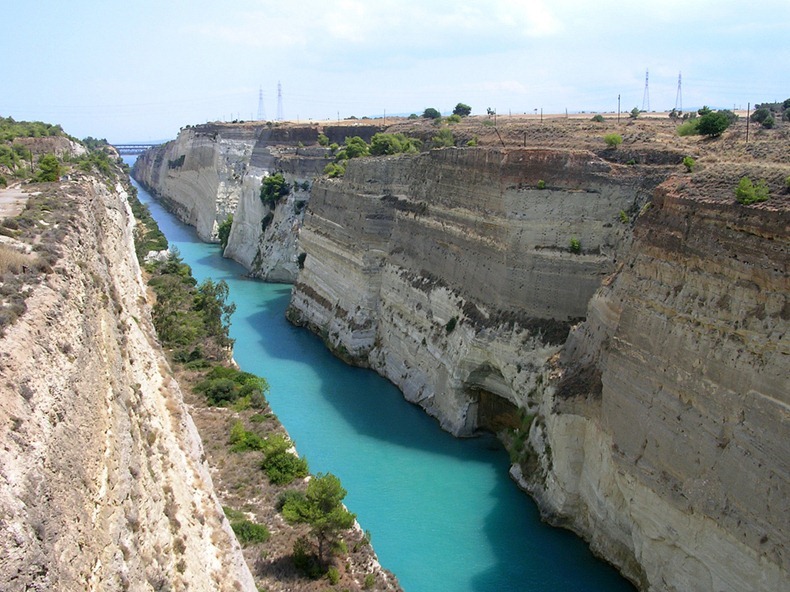Image by Golden Glow http://www.svgoldenglow.com
There’s a reason TripAdvisor rated it #1 of 19 things to do in Corinth, Greece. Sailing along the Corinth Canal there are no problems except how to be happiest.
The most direct route to the Aegean Sea by crossing the Gulf of Patras and the Gulf of Corinth in southernmost Greece, the Corinth Canal reveals a dramatic display for travelers with its mile-high limestone walls, picturesque mountains and astonishing landscapes layered with cypress and olive trees.
Things to Do
Approaching the Canal, visitors will awe at the Rio-Antiro Bridge just east of Patras and at the Isthmus of Corinth. Considered one of the world’s longest multi-span cable-stayed bridges, the fully-suspended structure attracts bungee enthusiasts from all over the world. Since 1991, Zulu Bungy has been suiting up adventurous souls in safety gearto make the 255.9ft/78 m leap.
Gateway to Southern Greece
The canal has served as a time-saver for boats and cruise ships since its completion in 1893. An intersection of international sea communities, Corinth Canal serves ships of all nationalities and provides safe sea lanes for ships arriving from the Ionian Sea, the Adriatic, southern Italy and those traversing the Straights of Messina on their way to Eastern Mediterranean venues leading to the Black Sea.
Stretching four miles/6.4 kilometers in length, the canal is quite narrow at just 70 ft./25 meters wide at the waterline and 8 meters deep, making it too slim for modern ships. And though larger vessels can’t use it, tourists continue to revel in its breathtaking views since numerous companies including Princess Cruises, offer tours through the canal with departure from Piraeus port.
A 2000-Year-Old Dream
Finally completed in the 19th century, the canal had been the obsession of many Greek rulers who wanted to find a way to bring ships from the Aegean Sea trying to cross the Adriatic and anchor in the rich shipping city of Corinth. For hundreds of years, ships had to circle the Peloponnese and extend their journeys an additional 185 nautical miles.
According to records, Periander, the second tyrant of Corinth in the 7th century BC, son of the first tyrant, Cypselus, first dreamed of building a canal in the city. While renovating the port in Corinth, Periander constructed a ramp across the Isthmus allowing ships to be pulled across Peloponnese and shorten their journey. The ramp was called the “Diolkos” and the money it generated for the city prompted Periander to put an end to taxes.

